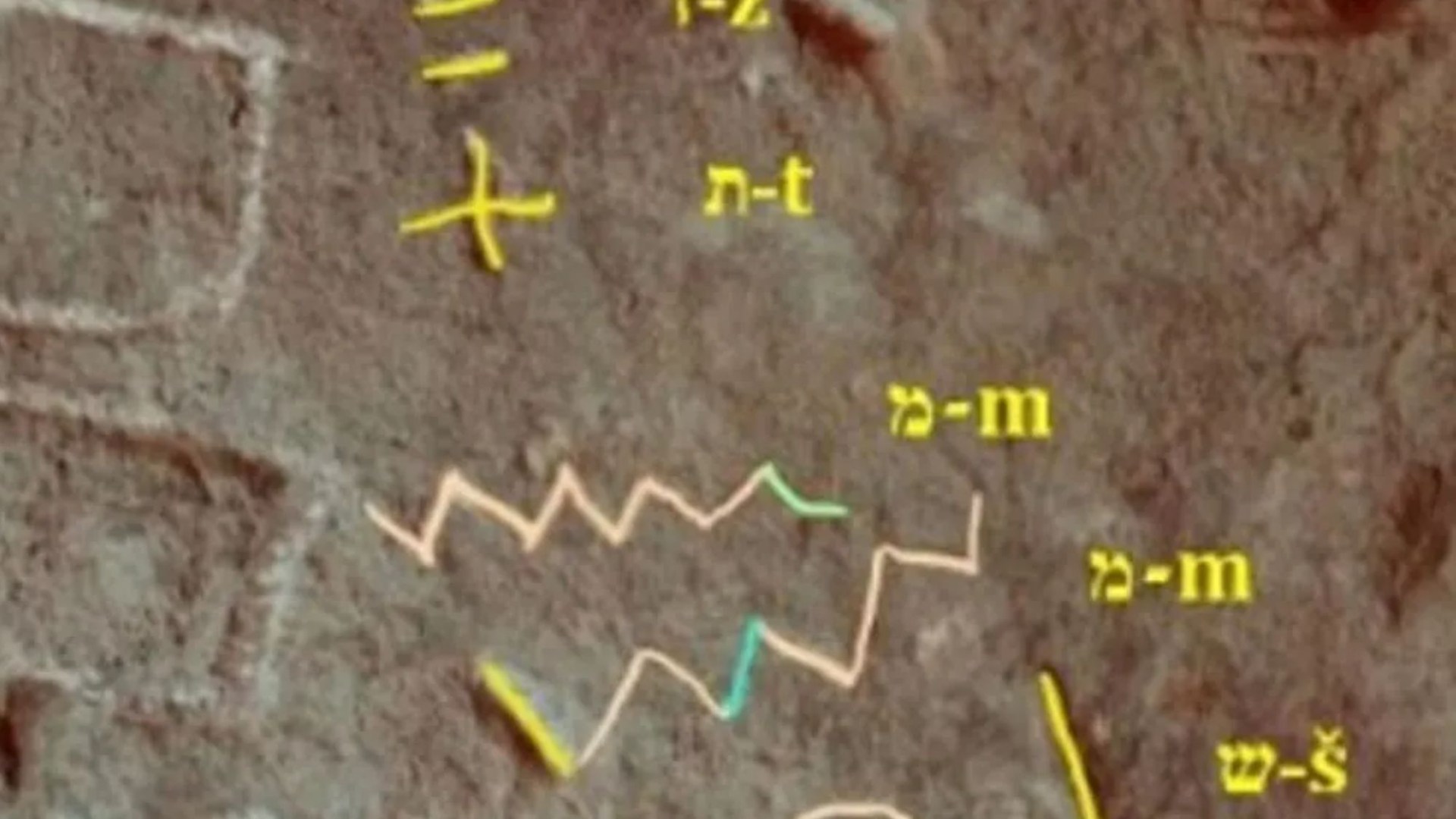Science
Ancient Egyptian Inscription Sparks Debate Over Biblical Ties

A newly discovered inscription estimated to be around 3,800 years old, found in an ancient turquoise mine in Egypt, has ignited discussions regarding its potential links to the biblical figure of Moses. Independent researcher Michael Bar-Ron posits that the markings at Serabit el-Khadim, located in the Sinai Peninsula, could translate to “This is from Moses” in Hebrew.
Discovered in Mine L, the Proto-Sinaitic carving dates back to approximately 1800 BC during Egypt’s late 12th Dynasty. Bar-Ron examined high-resolution images and 3D scans over eight years before suggesting that the text may be associated with the biblical narrative found in the Book of Exodus. He described the inscriptions as a mix of worshipful messages dedicated to the idol Ba’alat, which were later altered by a scribe to reflect a more monotheistic perspective.
“This is ground zero for this conflict,” Bar-Ron stated during an interview with Patterns of Evidence, discussing how the findings reflect a significant religious struggle among Semitic-speaking workers in the mines under Pharaoh Amenemhat III. His academic advisor, Dr. Pieter van der Veen, supports Bar-Ron’s interpretation, stating, “You’re absolutely correct, I read this as well, it is not imagined!”
Context and Controversy Surrounding the Finding
The recent discovery comes alongside other inscriptions in the area that reference early Israelite deities, including El, while also showing defaced mentions of the Egyptian goddess Hathor. Scholars suggest these erasures indicate a fierce religious conflict among the workers, reflecting the themes of defiance and departure found in the Exodus narrative.
Additional evidence of unrest is present at the site, including the remnants of a burned Ba’alat temple and inscriptions that mention slavery and overseers. Researchers noted that these elements resonate with the biblical account of the Israelites’ struggles in Egypt. Bar-Ron has also pointed out a second possible reference to “Moshe” (Moses) within the mine complex but emphasizes that he approaches these findings with caution, seeking alternative explanations alongside their biblical implications.
Despite the intriguing possibilities, mainstream scholars remain skeptical. Dr. Thomas Schneider, an Egyptologist at the University of British Columbia, criticized Bar-Ron’s claims as “completely unproven and misleading,” cautioning against arbitrary letter identifications that could distort historical understanding.
Future Research and Implications
As the debate continues, researchers are set to expand the catalogue of inscriptions in the mines. According to reports from the Jerusalem Post, structured-light scans are expected to reveal “well over twenty” new inscriptions, which will be made available as open-access 3D models later this year.
The geographical distribution of Proto-Sinaitic script from Egypt through Sinai into Canaan aligns closely with the biblical Exodus route, leading some to argue that the discovery is not coincidental. Critics counter that the weathered carvings may simply reflect Semitic graffiti from migrant workers, rather than evidence of a biblical narrative.
The ongoing exploration of this ancient site not only sheds light on historical events but also raises questions about the intersection of archaeology and faith, as researchers strive to distinguish fact from interpretation in ancient inscriptions. The findings at Serabit el-Khadim may not only deepen our understanding of Egypt’s past but also reignite discussions about the historical context of the Exodus as described in the Bible.
-

 Entertainment3 months ago
Entertainment3 months agoAnn Ming Reflects on ITV’s ‘I Fought the Law’ Drama
-

 Entertainment4 months ago
Entertainment4 months agoKate Garraway Sells £2 Million Home Amid Financial Struggles
-

 Health3 months ago
Health3 months agoKatie Price Faces New Health Concerns After Cancer Symptoms Resurface
-

 Entertainment3 months ago
Entertainment3 months agoCoronation Street’s Carl Webster Faces Trouble with New Affairs
-

 Entertainment3 months ago
Entertainment3 months agoWhere is Tinder Swindler Simon Leviev? Latest Updates Revealed
-

 World2 weeks ago
World2 weeks agoBailey Announces Heartbreaking Split from Rebecca After Reunion
-

 Entertainment4 months ago
Entertainment4 months agoMarkiplier Addresses AI Controversy During Livestream Response
-

 Entertainment2 weeks ago
Entertainment2 weeks agoCoronation Street Fans React as Todd Faces Heartbreaking Choice
-

 Science1 month ago
Science1 month agoBrian Cox Addresses Claims of Alien Probe in 3I/ATLAS Discovery
-

 Health4 months ago
Health4 months agoCarol Vorderman Reflects on Health Scare and Family Support
-

 Entertainment4 months ago
Entertainment4 months agoKim Cattrall Posts Cryptic Message After HBO’s Sequel Cancellation
-

 Entertainment3 months ago
Entertainment3 months agoOlivia Attwood Opens Up About Fallout with Former Best Friend









